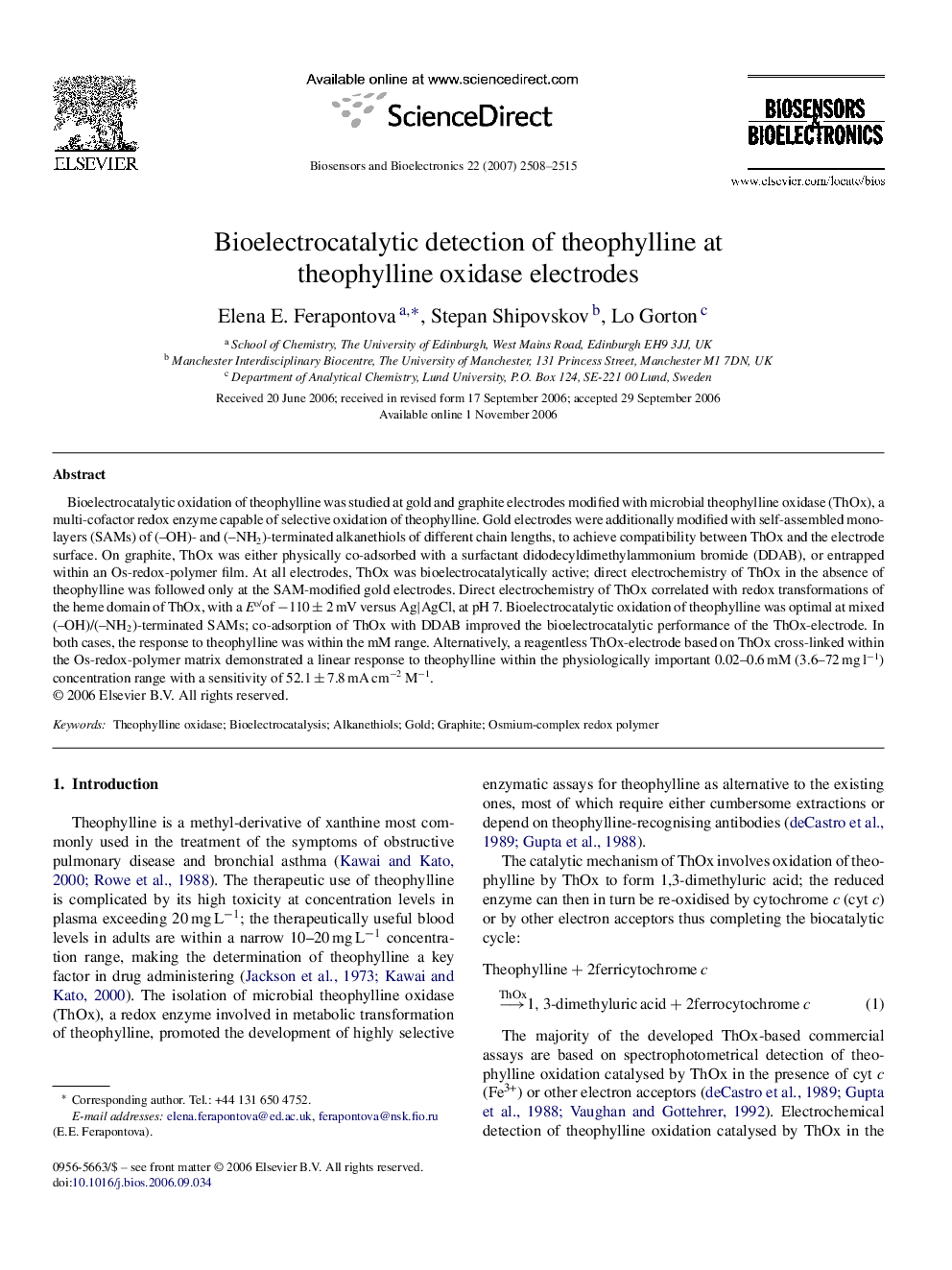| Article ID | Journal | Published Year | Pages | File Type |
|---|---|---|---|---|
| 869618 | Biosensors and Bioelectronics | 2007 | 8 Pages |
Bioelectrocatalytic oxidation of theophylline was studied at gold and graphite electrodes modified with microbial theophylline oxidase (ThOx), a multi-cofactor redox enzyme capable of selective oxidation of theophylline. Gold electrodes were additionally modified with self-assembled monolayers (SAMs) of (–OH)- and (–NH2)-terminated alkanethiols of different chain lengths, to achieve compatibility between ThOx and the electrode surface. On graphite, ThOx was either physically co-adsorbed with a surfactant didodecyldimethylammonium bromide (DDAB), or entrapped within an Os-redox-polymer film. At all electrodes, ThOx was bioelectrocatalytically active; direct electrochemistry of ThOx in the absence of theophylline was followed only at the SAM-modified gold electrodes. Direct electrochemistry of ThOx correlated with redox transformations of the heme domain of ThOx, with a Eo/of −110 ± 2 mV versus Ag|AgCl, at pH 7. Bioelectrocatalytic oxidation of theophylline was optimal at mixed (–OH)/(–NH2)-terminated SAMs; co-adsorption of ThOx with DDAB improved the bioelectrocatalytic performance of the ThOx-electrode. In both cases, the response to theophylline was within the mM range. Alternatively, a reagentless ThOx-electrode based on ThOx cross-linked within the Os-redox-polymer matrix demonstrated a linear response to theophylline within the physiologically important 0.02–0.6 mM (3.6–72 mg l−1) concentration range with a sensitivity of 52.1 ± 7.8 mA cm−2 M−1.
